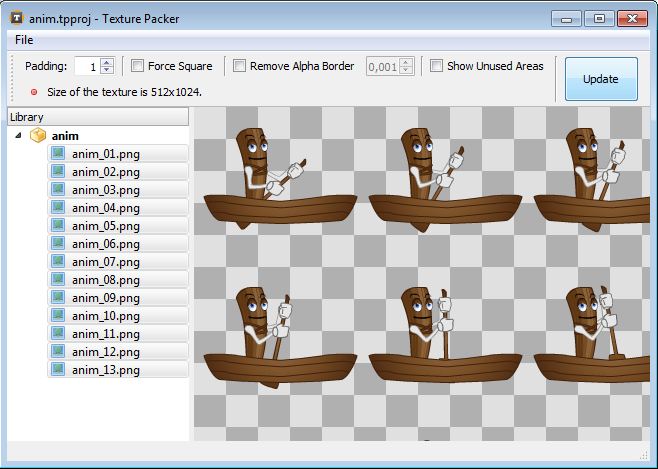Difference between revisions of "TexturePack"
| Line 11: | Line 11: | ||
==== Dynamic Creation of Texture Packs ==== | ==== Dynamic Creation of Texture Packs ==== | ||
| − | To create a texture pack dynamically (at run-time), create a | + | To create a texture pack dynamically (at run-time), create a '''TexturePack''' object with a table of file names of textures. |
<source lang="lua"> | <source lang="lua"> | ||
local pack = TexturePack.new({"1.png", "2.png", "3.png", "4.png"}) | local pack = TexturePack.new({"1.png", "2.png", "3.png", "4.png"}) | ||
Revision as of 00:52, 6 June 2023
Supported platforms: ![]()
![]()
![]()
![]()
![]()
![]()
![]()
Available since: Gideros 2011.6
Inherits from: TextureBase
Description
The TexturePack class specifies a texture pack (or texture atlas). A texture atlas is a large image which contains many smaller sub-images.
Gideros supports dynamic creation of texture atlases and pre-packed texture atlasses by using "Gideros Texture Packer" tool.
Dynamic Creation of Texture Packs
To create a texture pack dynamically (at run-time), create a TexturePack object with a table of file names of textures.
local pack = TexturePack.new({"1.png", "2.png", "3.png", "4.png"})
Static Creation of Texture Packs
To create a pre-packed texture atlas, use "Gideros Texture Packer" tool:
This tool exports two files: a .txt file that specifies the positions of texture regions and a .png file of packed texture.
Use these two files to create a texture pack:
local pack = TexturePack.new("pack.txt", "pack.png")
MethodsTexturePack.new creates a new TexturePack object from textures TexturePack:getLocation returns the location of the given texture in this pack |
EventsConstants |
